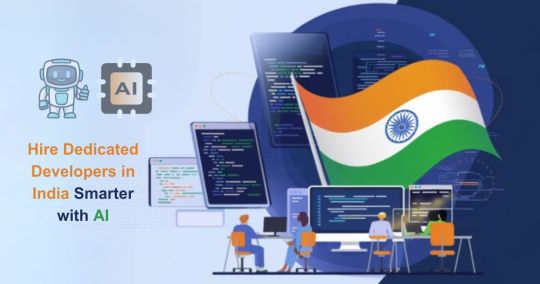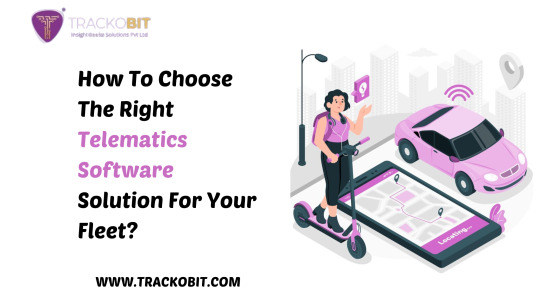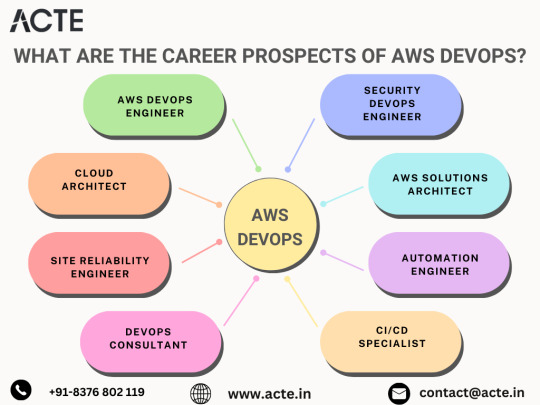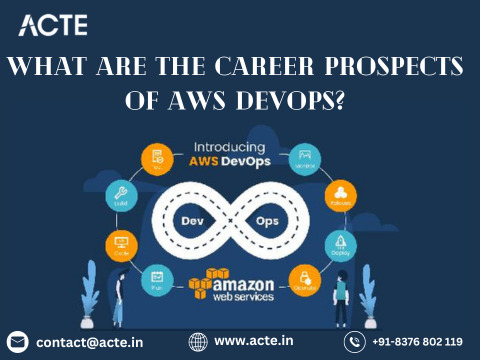#Software test engineer assessments
Explore tagged Tumblr posts
Text
Full Stack Developer Assessments

A full stack developer assessments for software developer who deals with both the Frontend (client-side) and Backend (server-side) of the product. Visit: https://hiremee.co.in/solutions/talent-assessments/industry-specific-assessments
#Full stack developer assessments#Python developer assessments#Cloud engineer assessments#DevOps engineer assessments#Mobile developer assessments#Software test engineer assessments#online cloud engineer assessments#healthcare assessments#Cyber security engineer assessments#Software developer assessments#Data analyst assessments
0 notes
Text
Hire Dedicated Developers in India Smarter with AI
Hire dedicated developers in India smarter and faster with AI-powered solutions. As businesses worldwide turn to software development outsourcing, India remains a top destination for IT talent acquisition. However, finding the right developers can be challenging due to skill evaluation, remote team management, and hiring efficiency concerns. Fortunately, AI recruitment tools are revolutionizing the hiring process, making it seamless and effective.

In this blog, I will explore how AI-powered developer hiring is transforming the recruitment landscape and how businesses can leverage these tools to build top-notch offshore development teams.
Why Hire Dedicated Developers in India?
1) Cost-Effective Without Compromising Quality:
Hiring dedicated developers in India can reduce costs by up to 60% compared to hiring in the U.S., Europe, or Australia. This makes it a cost-effective solution for businesses seeking high-quality IT staffing solutions in India.
2) Access to a Vast Talent Pool:
India has a massive talent pool with millions of software engineers proficient in AI, blockchain, cloud computing, and other emerging technologies. This ensures companies can find dedicated software developers in India for any project requirement.
3) Time-Zone Advantage for 24/7 Productivity:
Indian developers work across different time zones, allowing continuous development cycles. This enhances productivity and ensures faster project completion.
4) Expertise in Emerging Technologies:
Indian developers are highly skilled in cutting-edge fields like AI, IoT, and cloud computing, making them invaluable for innovative projects.
Challenges in Hiring Dedicated Developers in India
1) Finding the Right Talent Efficiently:
Sorting through thousands of applications manually is time-consuming. AI-powered recruitment tools streamline the process by filtering candidates based on skill match and experience.
2) Evaluating Technical and Soft Skills:
Traditional hiring struggles to assess real-world coding abilities and soft skills like teamwork and communication. AI-driven hiring processes include coding assessments and behavioral analysis for better decision-making.
3) Overcoming Language and Cultural Barriers:
AI in HR and recruitment helps evaluate language proficiency and cultural adaptability, ensuring smooth collaboration within offshore development teams.
4) Managing Remote Teams Effectively:
AI-driven remote work management tools help businesses track performance, manage tasks, and ensure accountability.
How AI is Transforming Developer Hiring
1. AI-Powered Candidate Screening:
AI recruitment tools use resume parsing, skill-matching algorithms, and machine learning to shortlist the best candidates quickly.
2. AI-Driven Coding Assessments:
Developer assessment tools conduct real-time coding challenges to evaluate technical expertise, code efficiency, and problem-solving skills.
3. AI Chatbots for Initial Interviews:
AI chatbots handle initial screenings, assessing technical knowledge, communication skills, and cultural fit before human intervention.
4. Predictive Analytics for Hiring Success:
AI analyzes past hiring data and candidate work history to predict long-term success, improving recruitment accuracy.
5. AI in Background Verification:
AI-powered background checks ensure candidate authenticity, education verification, and fraud detection, reducing hiring risks.
Steps to Hire Dedicated Developers in India Smarter with AI
1. Define Job Roles and Key Skill Requirements:
Outline essential technical skills, experience levels, and project expectations to streamline recruitment.
2. Use AI-Based Hiring Platforms:
Leverage best AI hiring platforms like LinkedIn Talent Insightsand HireVue to source top developers.
3. Implement AI-Driven Skill Assessments:
AI-powered recruitment processes use coding tests and behavioral evaluations to assess real-world problem-solving abilities.
4. Conduct AI-Powered Video Interviews:
AI-driven interview tools analyze body language, sentiment, and communication skills for improved hiring accuracy.
5. Optimize Team Collaboration with AI Tools:
Remote work management tools like Trello, Asana, and Jira enhance productivity and ensure smooth collaboration.
Top AI-Powered Hiring Tools for Businesses
LinkedIn Talent Insights — AI-driven talent analytics
HackerRank — AI-powered coding assessments
HireVue — AI-driven video interview analysis
Pymetrics — AI-based behavioral and cognitive assessments
X0PA AI — AI-driven talent acquisition platform
Best Practices for Managing AI-Hired Developers in India
1. Establish Clear Communication Channels:
Use collaboration tools like Slack, Microsoft Teams, and Zoom for seamless communication.
2. Leverage AI-Driven Productivity Tracking:
Monitor performance using AI-powered tracking tools like Time Doctor and Hubstaff to optimize workflows.
3. Encourage Continuous Learning and Upskilling:
Provide access to AI-driven learning platforms like Coursera and Udemy to keep developers updated on industry trends.
4. Foster Cultural Alignment and Team Bonding:
Organize virtual team-building activities to enhance collaboration and engagement.
Future of AI in Developer Hiring
1) AI-Driven Automation for Faster Hiring:
AI will continue automating tedious recruitment tasks, improving efficiency and candidate experience.
2) AI and Blockchain for Transparent Recruitment:
Integrating AI with blockchain will enhance candidate verification and data security for trustworthy hiring processes.
3) AI’s Role in Enhancing Remote Work Efficiency:
AI-powered analytics and automation will further improve productivity within offshore development teams.
Conclusion:
AI revolutionizes the hiring of dedicated developers in India by automating candidate screening, coding assessments, and interview analysis. Businesses can leverage AI-powered tools to efficiently find, evaluate, and manage top-tier offshore developers, ensuring cost-effective and high-quality software development outsourcing.
Ready to hire dedicated developers in India using AI? iQlance offers cutting-edge AI-powered hiring solutions to help you find the best talent quickly and efficiently. Get in touch today!
#AI#iqlance#hire#india#hirededicatreddevelopersinIndiawithAI#hirededicateddevelopersinindia#aipoweredhiringinindia#bestaihiringtoolsfordevelopers#offshoresoftwaredevelopmentindia#remotedeveloperhiringwithai#costeffectivedeveloperhiringindia#aidrivenrecruitmentforitcompanies#dedicatedsoftwaredevelopersindia#smarthiringwithaiinindia#aipowereddeveloperscreening
5 notes
·
View notes
Text
Oh gawd, it’s all unravelling!! I’ve resorted to asking my ChatGPT for advice on how to handle this!! This is the context I put it:
work in a small startup with 7 other people
I have been brought on for a three month contract to assess the current product and make recommendations for product strategy, product roadmap, improved engineering and product processes with a view to rebuilding the platform with a new product and migrating existing vendors and borrowers across
There is one engineer and no-one else in the company has any product or technical experience
The engineer has worked on his own for 6 years on the product with no other engineering or product person
He does all coding, testing, development, devops tasks
He also helps with customer support enquires
He was not involved in the process of bringing me onboard and felt blindsided by my arrival
I have requested access to Github, and his response was:
As you can imagine access to the source code is pretty sensitive. Are you looking for something specifically? And do you plan on downloading the source code or sharing with anyone else?
He then advised they only pay for a single seat
I have spoken with the Chief Operations Officer who I report to in the contract and advised my business risk concerns around single point of failure
I have still not been granted access to Github so brought it up again today with the COO, who said he had requested 2 weeks ago
The COO then requested on Asana that the engineer add myself and himself as Github users
I received the following from the engineer:
Hey can you please send me your use cases for your access to GitHub? How exactly are you going to use your access to the source code?
My response:
Hey! My request isn’t about making changes to the codebase myself but ensuring that Steward isn’t reliant on a single person for access.
Here are the key reasons I need GitHub access:
1 Business Continuity & Risk Management – If anything happens to you (whether you’re on holiday, sick, or god forbid, get hit by a bus!!), we need someone else with access to ensure the platform remains operational. Right now, Steward has a single point of failure, which is a pretty big risk.
2 Product Oversight & Documentation – As Head of Product, I need visibility into the codebase to understand technical limitations, dependencies, and opportunities at a broad level. This DOESN'T mean I’ll be writing code, but I need to see how things are structured to better inform product decisions and prioritization.
3 Facilitating Future Hiring – If we bring in additional engineers or external contractors, we need a structured process for managing access. It shouldn't be on just one person to approve or manage this.
Super happy to discuss any concerns you have, but this is ultimately a business-level decision to ensure Steward isn’t putting itself at risk.
His response was:
1&3 Bridget has user management access for those reasons
2. no one told me you were Head of Product already, which isn’t surprising. But congrats! So will you be sharing the source code with other engineers for benchmarking?
The software engineer is an introvert and while not rude is helpful without volunteering inflation
He is also the single access for AWS, Sentry, Persona (which does our KYC checks).
I already had a conversation with him as I felt something was amiss in the first week. This was when he identified that he had been "blindsided" by my arrival, felt his code and work was being audited. I explained that it had been a really long process to get the contract (18 months), also that I have a rare mix of skills (agtech, fintech, product) that is unusually suited to Steward. I was not here to tell him what to do but to work with him, my role to setup the strategy and where we need to go with the product and why, and then work with him to come up with the best solution and he will build it. I stressed I am not an engineer and do not code.
I have raised some concerns with the COO and he seems to share some of the misgivings, I sense some personality differences, there seems like there are some undercurrents that were there before I started.
I have since messaged him with a gentler more collaborative approach:
Hey, I’ve been thinking about GitHub access and wanted to float an idea, would it make sense for us to do a working session where you just walk me through the repo first? That way, I can get a sense of the structure without us having to rush any access changes or security decisions right away. Then, we can figure out what makes sense together. What do you think?
I’m keen to understand your perspective a bit more, can we chat about it tomorrow when you're back online? Is 4pm your time still good? I know you’ve got a lot on, so happy to be flexible.
I think I’ve fucked it up, I’m paranoid the COO is going to think I’m stirring up trouble and I’m going to miss out on this job. How to be firm yet engage with someone that potentially I’ll have to work closely with(he’s a prickly, hard to engage Frenchie, who’s lived in Aus and the US for years).
5 notes
·
View notes
Text
Germany Recruitment Exam Results 2025 – Latest Updates & Notifications
When discussing Germany's authorities task effects, the context usually refers back to the hiring strategies, outcomes, and aggressive selection strategies for positions within the public sector. The German government is understood for its strong and obvious recruitment practices for civil carrier roles, starting from administrative positions to specialised roles in regions consisting of law, healthcare, era, and education. This process guarantees that the best applicants, with suitable qualifications, are decided on for positions that serve the public.

Latest Germany government job results 2025
Overview of Germany's Government Job System
Germany’s public area is one among the most important employers inside the united states of america, providing a huge variety of profession opportunities for individuals with diverse abilties and qualifications. Government jobs in Germany are usually offered at the federal, state, and nearby ranges, with each stage having wonderful hiring techniques and regulations. The federal government operates in a extraordinarily established way, with strict regulations concerning the recruitment system, employee rights, and process classifications.
The recruitment technique for German government jobs typically entails competitive exams, unique application approaches, and interviews. Candidates are anticipated to meet particular academic and expert necessities based totally at the task's stage and nature. For example, positions requiring technical or specialized information, including engineers or lawyers, have one-of-a-kind standards than administrative or assist roles.
The Application Process
The utility manner for authorities jobs in Germany is thorough, aiming to make sure equity and transparency. Here are the important thing ranges concerned within the software process:
Job Posting: Government task openings are publicly posted on official structures, consisting of the German Federal Employment Agency (Bundesagentur für Arbeit) website, in addition to unique governmental portals for every country or municipality. These postings will define the specified qualifications, talents, and revel in needed for every position.
Application Submission: Interested candidates ought to submit their programs on line or through mail, depending at the particular task. The software normally requires a resume (Lebenslauf), a cowl letter (Anschreiben), and any relevant certificates or proof of qualifications.
Screening and Shortlisting: Once applications are obtained, the applicable authorities screen the applicants primarily based on their qualifications and revel in. This technique may contain reviewing academic credentials, paintings experience, and language talent (specifically in German). Candidates who meet the minimal qualifications are shortlisted for the subsequent stage.
Examinations and Tests: For many authorities jobs, particularly those in administrative roles or regulation enforcement, applicants must bypass written or oral checks. These checks determine trendy know-how, technical capabilities, problem-fixing abilties, and language skillability. Some positions, mainly in specialised fields, may also require applicants to take competencies assessments or technical exams.
Background Checks: Following a a success interview, the candidate can also undergo history assessments, along with verifying educational qualifications, previous employment, and crook information (if applicable). This is particularly important for positions that contain get entry to to touchy authorities facts or protection concerns.
Job Offer: If a candidate is a success in all degrees of the recruitment method, they are prolonged a proper process offer. This will include details about the location, earnings, blessings, and other employment terms.
Types of Government Jobs in Germany
Germany offers a extensive range of government jobs that modify in phrases of duty, qualifications required, and running conditions. Some of the most commonplace categories consist of:
Administrative Positions: These roles involve tasks including workplace control, file-maintaining, budgeting, and coverage implementation. Administrative jobs are determined in any respect levels of presidency, from nearby municipalities to federal groups. Common positions include clerks, administrative assistants, and assignment managers.
Law Enforcement and Security: The federal and state governments in Germany rent lots of law enforcement officers, including police officers, customs officers, and security employees. These positions are extraordinarily aggressive and generally require specific qualifications, along with education at a police academy and passing bodily fitness tests.
Healthcare and Social Services: Germany’s public healthcare machine relies closely on government-hired experts, which include medical doctors, nurses, social employees, and healthcare administrators. These roles frequently require specialized education and certification similarly to applicable paintings enjoy.
Education and Teaching: Government-run colleges and universities offer teaching positions for various educational topics. Teachers in Germany should whole kingdom-sanctioned education and training packages, and the opposition for those jobs may be intense, specially in regions together with primary education, secondary schooling, and specialized topics like languages or sciences.
Research and Development: Many authorities companies in Germany fund and carry out clinical research, innovation, and technological development. Government-funded studies positions in fields together with engineering, economics, and environmental technology are often available, especially at establishments like the Max Planck Society or the Fraunhofer Society.
Diplomatic and International Relations: Germany’s foreign carrier offers profession possibilities for people interested by international relations, international law, and worldwide development. These positions regularly require advanced levels in international relations, law, or political technology, in addition to skillability in overseas languages.
Environmental and Public Policy Roles: The German authorities places sizeable emphasis on sustainability, weather alternate mitigation, and environmental protection. Jobs in this zone consist of positions in environmental making plans, policy analysis, and conservation.
Salary and Benefits in Government Jobs
Salaries for government jobs in Germany are regulated through the general public pay scale gadget, which sets compensation according to the position and seniority. The pay scale varies based totally on the level of presidency (federal, nation, or municipal) and the nature of the work. For example, an access-stage administrative assistant may earn a lower profits compared to a senior researcher in a specialized discipline.
In addition to revenue, authorities employees in Germany are entitled to various blessings, inclusive of:
Job Security: Government jobs are usually taken into consideration stable and secure, with fewer layoffs as compared to non-public-quarter jobs.
Pension Plans: Employees in authorities roles are entitled to a public pension scheme, which ensures a stable retirement profits.
Paid Leave: Government employees get hold of paid excursion days, vacations, and sick go away, with the range of days various by task type and tenure.
Health Insurance: Government personnel are protected by way of public health insurance, which gives get entry to to medical care and remedy.
Challenges and Opportunities
The opposition for government jobs in Germany may be severe, in particular in exceptionally sought-after regions which includes law enforcement, research, and training. The recruitment system is rigorous, and simplest those who meet the qualifications and exhibit the necessary talents are probable to succeed. However, the advantages of a profession within the public region—including process stability, competitive earnings, and generous advantages—make those positions appealing to many.
Moreover, Germany’s dedication to equal opportunity means that individuals from numerous backgrounds, such as those with disabilities or the ones from migrant groups, are advocated to apply for government jobs. The authorities also emphasizes work-existence stability, creating a conducive environment for people with own family responsibilities or different non-public commitments.
2 notes
·
View notes
Text
What Are the Costs Associated with Fintech Software Development?

The fintech industry is experiencing exponential growth, driven by advancements in technology and increasing demand for innovative financial solutions. As organizations look to capitalize on this trend, understanding the costs associated with fintech software development becomes crucial. Developing robust and secure applications, especially for fintech payment solutions, requires significant investment in technology, expertise, and compliance measures. This article breaks down the key cost factors involved in fintech software development and how businesses can navigate these expenses effectively.
1. Development Team and Expertise
The development team is one of the most significant cost drivers in fintech software development. Hiring skilled professionals, such as software engineers, UI/UX designers, quality assurance specialists, and project managers, requires a substantial budget. The costs can vary depending on the team’s location, expertise, and experience level. For example:
In-house teams: Employing full-time staff provides better control but comes with recurring costs such as salaries, benefits, and training.
Outsourcing: Hiring external agencies or freelancers can reduce costs, especially if the development team is located in regions with lower labor costs.
2. Technology Stack
The choice of technology stack plays a significant role in the overall development cost. Building secure and scalable fintech payment solutions requires advanced tools, frameworks, and programming languages. Costs include:
Licenses and subscriptions: Some technologies require paid licenses or annual subscriptions.
Infrastructure: Cloud services, databases, and servers are essential for hosting and managing fintech applications.
Integration tools: APIs for payment processing, identity verification, and other functionalities often come with usage fees.
3. Security and Compliance
The fintech industry is heavily regulated, requiring adherence to strict security standards and legal compliance. Implementing these measures adds to the development cost but is essential to avoid potential fines and reputational damage. Key considerations include:
Data encryption: Robust encryption protocols like AES-256 to protect sensitive data.
Compliance certifications: Obtaining certifications such as PCI DSS, GDPR, and ISO/IEC 27001 can be costly but are mandatory for operating in many regions.
Security audits: Regular penetration testing and vulnerability assessments are necessary to ensure application security.
4. Customization and Features
The complexity of the application directly impacts the cost. Basic fintech solutions may have limited functionality, while advanced applications require more extensive development efforts. Common features that add to the cost include:
User authentication: Multi-factor authentication (MFA) and biometric verification.
Real-time processing: Handling high volumes of transactions with minimal latency.
Analytics and reporting: Providing users with detailed financial insights and dashboards.
Blockchain integration: Leveraging blockchain for enhanced security and transparency.
5. User Experience (UX) and Design
A seamless and intuitive user interface is critical for customer retention in the fintech industry. Investing in high-quality UI/UX design ensures that users can navigate the platform effortlessly. Costs in this category include:
Prototyping and wireframing.
Usability testing.
Responsive design for compatibility across devices.
6. Maintenance and Updates
Fintech applications require ongoing maintenance to remain secure and functional. Post-launch costs include:
Bug fixes and updates: Addressing issues and releasing new features.
Server costs: Maintaining and scaling infrastructure to accommodate user growth.
Monitoring tools: Real-time monitoring systems to track performance and security.
7. Marketing and Customer Acquisition
Once the fintech solution is developed, promoting it to the target audience incurs additional costs. Marketing strategies such as digital advertising, influencer partnerships, and content marketing require significant investment. Moreover, onboarding users and providing customer support also contribute to the total cost.
8. Geographic Factors
The cost of fintech software development varies significantly based on geographic factors. Development in North America and Western Europe tends to be more expensive compared to regions like Eastern Europe, South Asia, or Latin America. Businesses must weigh the trade-offs between cost savings and access to high-quality talent.
9. Partnering with Technology Providers
Collaborating with established technology providers can reduce development costs while ensuring top-notch quality. For instance, Xettle Technologies offers comprehensive fintech solutions, including secure APIs and compliance-ready tools, enabling businesses to streamline development processes and minimize risks. Partnering with such providers can save time and resources while enhancing the application's reliability.
Cost Estimates
While costs vary depending on the project's complexity, here are rough estimates:
Basic applications: $50,000 to $100,000.
Moderately complex solutions: $100,000 to $250,000.
Highly advanced platforms: $250,000 and above.
These figures include development, security measures, and initial marketing efforts but may rise with added features or broader scope.
Conclusion
Understanding the costs associated with fintech software development is vital for effective budgeting and project planning. From assembling a skilled team to ensuring compliance and security, each component contributes to the total investment. By leveraging advanced tools and partnering with experienced providers like Xettle Technologies, businesses can optimize costs while delivering high-quality fintech payment solutions. The investment, though significant, lays the foundation for long-term success in the competitive fintech industry.
2 notes
·
View notes
Text
Enhancing Urban Development in Saudi Arabia with DSP Consultants' Acoustic Expertise
As Saudi Arabia experiences a surge in urban and infrastructural development, effective noise control and sound design have become integral to creating sustainable and livable spaces. Acoustic consultants play a vital role in shaping environments that prioritize comfort, productivity, and compliance with regulatory standards. At DSP Consultants, we specialize in offering tailored acoustic solutions for a variety of projects across Saudi Arabia.

The Role of Acoustic Consultants in Saudi Arabia
Acoustic consultants provide services that go beyond basic noise control, addressing the growing need to mitigate urban noise from traffic, construction, and industrial activities. They utilize cutting-edge technology to ensure projects meet both local and international regulations while enhancing the acoustic quality of indoor and outdoor spaces.
Key Acoustic Services Offered by DSP Consultants
Acoustic Testing and Noise AssessmentDSP Consultants leverages advanced equipment, such as decibel meters and noise modeling software, to assess existing noise levels at project sites. Noise maps and predictive models are developed to evaluate the potential impacts of new developments, ensuring compliance with environmental standards.
Noise Mitigation StrategiesWe design effective solutions to minimize noise pollution, such as:
Installing sound barriers to shield sensitive areas from urban noise.
Incorporating green zones to act as natural buffers.
Optimizing building orientations and material selection for maximum noise reduction.
Building AcousticsOur services include room acoustic design, soundproofing, and HVAC noise control to create quieter indoor environments in residential, commercial, and industrial spaces. Whether it's enhancing speech clarity in meeting rooms or designing home entertainment systems, we deliver customized solutions for optimal acoustics.
Sustainable Acoustic DesignBy aligning with green building initiatives, DSP Consultants promotes the use of eco-friendly materials for sound insulation and vibration control. This approach not only supports environmental sustainability but also ensures long-lasting acoustic efficiency.
The Growing Demand for Acoustic Consulting in Saudi Arabia
As cities like Riyadh, Jeddah, and Dammam expand, the need for comprehensive acoustic consulting is rising. Major projects, including mixed-use developments, high-rise buildings, and transportation hubs, require expert noise management to enhance livability and meet regulatory standards. DSP Consultants has extensive experience working on complex urban developments, ensuring seamless integration of acoustic solutions with architectural and engineering designs.
Why Choose DSP Consultants?
With a proven track record in the Middle East, DSP Consultants is a trusted partner for delivering innovative acoustic solutions tailored to Saudi Arabia’s unique needs. Our experienced team provides:
Detailed Noise Assessments: From environmental impact studies to real-time monitoring.
Specialized Acoustic Modeling: Utilizing tools like CadnaA to visualize and optimize sound management strategies.
Compliance Expertise: Ensuring projects align with Saudi Arabia’s environmental noise regulations.
Creating Sound Solutions for a Better Tomorrow
At DSP Consultants, we believe that sound design is more than just noise reduction—it’s about creating spaces that foster productivity, well-being, and community harmony. From residential areas and commercial hubs to industrial zones, our acoustic expertise enhances the quality of life across Saudi Arabia.
For tailored acoustic consulting services, contact DSP Consultants at [email protected].
2 notes
·
View notes
Text
Shinetech Software achieves Cyber Essentials Plus certification
Shinetech Software is proud to announce that it has achieved Cyber Essentials Plus certification proving its dedication to cyber security and protection from cyber-attacks. Cyber Essentials Plus is an official UK Government-backed, industry-supported certification scheme to help organisations demonstrate operational security against the ever-growing threat of cyber-attacks and a commitment to cyber security.
Assessed and verified through an independent external audit it requires compliance and rigorous testing of our business security controls and processes. The certification also acknowledges our strong security management ethos and procedural framework.

Frank Zhang, UK Managing Director at Shinetech Software says “Achieving the Cyber Essentials Plus certification underscores our commitment to ensuring our cyber security is as strong as possible to protect our customers’ data. We take these responsibilities very seriously and this certification complements our existing ISO 27001 Information Security Management System certification.”.
Andy Landsberg, Cyber Security Manager at Frimley Health NHS Foundation Trust says “We have worked with Shinetech Software over many years and are pleased they have achieved the Cyber Essentials Plus certification in recognition of the controls they have in place and the work they undertake to maintain data security, illustrating their adherence to best practice guidelines.”.
Frimley Health, along with other key partners including Barts Health NHS Trust, Lewisham & Greenwich NHS Trust and Queen Mary University of London, collaborated with Shinetech Software on the industry award winning GDPR compliant Class Attendance Tracker QR (CATQR) digital solution for employers and educational institutions to monitor staff and student attendance in real-time.
Apple and Google recently approved the release of the new CATQR mobile app which is compliant with the latest Apple iOS and Google Android mobile app policy and security guidelines.
Shinetech Software is a Microsoft Gold Certified Partner and Gartner Cool Vendor with delivery centres in London, New York and Sydney supported by over 20 software engineering development centres throughout Asia.
Find out more about Shinetech Software bespoke software engineering services on https://www.shinetechsoftware.co.uk and watch the Frimley Health CATQR video on https://www.catqr.com or https://www.youtube.com/watch?v=ONq55EgAA5I
3 notes
·
View notes
Text
From 2D to BIM: Upgrading Your Architectural Design Process
Are you still stuck in the 2D era?
Upgrade your architectural design process to the cutting-edge technology of Building Information Modelling (BIM). This game-changing innovation is transforming the architecture industry, and it's time to join the revolution.
The Limitations of 2D Design
Traditional 2D architectural design has served us well, but it's time to acknowledge its constraints. 2D designs lack the depth and detail required for modern construction projects. if it's fail to provide a comprehensive understanding of the building's components, leading to errors, miscommunications, and costly rework.
Lack of Clarity: 2D designs can be ambiguous, leading to misunderstandings and misinterpretations.
Inadequate Visualization: 2D designs struggle to convey complex spatial relationships and design intent.
Inefficient Collaboration: 2D designs make it challenging for stakeholders to collaborate and communicate effectively.
Error-Prone: 2D designs are more susceptible to human error, leading to costly rework and delays.

Enter BIM: The Future of Architectural Design
BIM is more than just a design tool – it's a collaborative platform that unifies architecture, engineering, and construction professionals. With BIM, you can create detailed, data-rich models that simulate real-world performance. This revolutionary technology enables:
Improved Collaboration: Stakeholders can access and contribute to the design process in real-time, ensuring everyone is on the same page.
Enhanced Visualization: 3D models and simulations facilitate better understanding and communication, reducing errors and miscommunications.
Increased Accuracy: Automated clash detection and interference checking minimize errors, ensuring a more efficient design process.
Efficient Project Management: Real-time tracking and analysis streamline the construction process, reducing delays and cost overruns.
Seamless Transition with Architectural BIM Services
Upgrading to BIM doesn't mean starting from scratch. Our expert Architectural BIM Services will guide you through a seamless transition, leveraging your existing designs to create rich, data-driven models. Our comprehensive services include:
Architectural BIM Modeling: Transforming 2D designs into detailed, interactive 3D models, enabling enhanced visualization and collaboration.
Architecture CAD Drawing: Converting traditional CAD files into BIM-compatible formats, ensuring a smooth transition.
Architectural 3D Modeling Services: Creating immersive, photorealistic visualizations, enhancing design communication and stakeholder engagement.
Architectural 3D Rendering Services: Generating stunning, high-resolution images and animations, perfect for marketing and presentation purposes.
Benefits of BIM
Enhanced Creativity: Explore new design possibilities with data-driven models, unlocking innovative solutions.
Improved Productivity: Streamline your workflow with automated processes, reducing design time and costs.
Increased Competitiveness: Stand out with cutting-edge technology and innovative solutions, attracting clients and projects.
Better Decision-Making: Data-driven models enable informed decisions, reducing risks and improving project outcomes.
Sustainability: BIM facilitates sustainable design, reducing environmental impact and promoting green building practices.
Implementing BIM in Your Practice
Upgrading to BIM requires a strategic approach. Here's a step-by-step guide to ensure a smooth transition:
Assess Your Current Workflow: Identify areas for improvement and determine the best approach for your practice.
Choose the Right BIM Software: Select a software that aligns with your needs and skill level.
Train Your Team: Invest in comprehensive training to ensure a seamless transition.
Develop a BIM Execution Plan: Establish clear goals, processes, and standards for your BIM implementation.
Start Small: Begin with a pilot project to test and refine your BIM workflow.
The architectural design process is evolving, and BIM is leading the charge. Don't let outdated design processes hold you back. Embrace the future of architecture with our expert BIM services. Discover the advantages of enhanced creativity, improved productivity, and increased competitiveness. Join the BIM revolution today and transform your architectural design process. Contact us to learn more about our Architecture BIM Services and take the first step towards a more efficient, collaborative, and innovative future.
#architecture#interiors#bim#construction#autocad#architectdesign#architecturalbimservices#modern architecture
2 notes
·
View notes
Text
SACL
Website: https://www.saclcanada.com/foundationdesign Address: 5360 Canotek Road, Unit 5, Gloucester, ON, K1J 9E3, Canada SACL’s foundation design focuses on innovative and highly accurate static load testing technique for assessing pile foundation axial capacity. Renowned for its speed and reliability, bidirectional testing has become an invaluable tool in the industry. SACL engineers have enhanced this method with automated testing systems and data acquisition software, reducing human error and increasing measurement accuracy. #Environmental Services#foundation design

2 notes
·
View notes
Text
Engineering Ethics in the Modern World
In the bustling area of technology and innovation, where every day brings a discovery, the role of ethics in engineering cannot be overstated. At its core, engineering is about solving problems and making life easier and more efficient. However, as we race towards the future, the ethical implications of our decisions become increasingly significant.
This is especially relevant for students and professionals associated with esteemed institutions like the Faculty of Engineering & Technology, which is the Datta Meghe College of Engineering, one of the best engineering colleges in Wardha, where the foundation of ethical engineering practices is laid.
The Pillars of Engineering Ethics
Several key principles form the foundation of engineering ethics:
1. Safety: Ensuring the safety of the public, the environment, and the workforce is paramount. This involves rigorous testing, transparent reporting, and constant vigilance against potential hazards.
2. Honesty: Engineers must be honest in their communications and reports. This includes acknowledging limitations, risks, and uncertainties associated with their work.
3. Fairness: This involves treating everyone with respect and without discrimination. It also means considering the impact of engineering projects on all stakeholders, including marginalized communities.
4. Privacy: With the rise of digital technology, respecting and protecting individuals' privacy has become a significant concern for engineers in all fields, from software development to civil engineering.
Real-world Applications of Engineering
Institutions like FEAT, the Datta Meghe College of Engineering, are recognized as one of the best engineering colleges in Wardha, are at the forefront of integrating ethical considerations into their curriculum. This ensures that graduates are not just technically proficient but also morally grounded.
Let's explore how these ethical principles are applied in real-world scenarios:
Developing Sustainable Solutions: Engineers are increasingly tasked with creating solutions that are not only effective but also sustainable. This means considering the environmental impact and striving for solutions that promote conservation and reduce waste.
Ensuring Data Privacy and Security: In the digital age, engineers must design systems that protect users' privacy and secure their data against unauthorized access and breaches.
Ethical AI Development: As artificial intelligence becomes more integrated into our lives, ethical concerns around bias, transparency, and accountability become paramount. Engineers must work to ensure AI systems are fair and do not perpetuate existing inequalities.
Public Safety and Infrastructure: Civil engineers, in particular, directly impact public safety through the design and maintenance of infrastructure. Ethical considerations include ensuring structures are safe, resilient, and accessible to all.
Challenges in Modern Engineering Ethics
While the principles of engineering ethics are clear, applying them in the modern world comes with its own set of challenges:
Rapid Technological Advancement: The fast pace of technological innovation can make it difficult to fully assess the long-term impacts and ethical considerations of new developments.
Globalization: Working on projects that span different countries and cultures can introduce complex ethical dilemmas, requiring engineers to navigate varying legal and moral frameworks.
Interdisciplinary Work: Modern engineering projects often involve professionals from various fields, making maintaining cohesive ethical standards more challenging.
The Role of Education
Educational institutions like FEAT, the Datta Meghe College of Engineering, play a crucial role in preparing the next generation of engineers to face these challenges. By embedding ethical considerations into the engineering curriculum, students learn to integrate ethical thinking into all aspects of their work.
This includes case studies, ethical dilemma discussions, and projects that simulate real-world scenarios, ensuring graduates are well-equipped to make ethical decisions professionally.
Conclusion
As we continue to push the boundaries of what's possible, the importance of ethics in engineering cannot be overstated. Every engineer is responsible for upholding these principles, ensuring that our advancements lead to a better, safer, and more equitable world.
The ethical landscape of engineering is both complex and ever-evolving. As technology continues to advance, the need for ethical vigilance remains constant. By fostering a deep understanding of engineering ethics, institutions, and professionals ensure that the future of engineering is not just innovative but ethically sound and sustainable.
3 notes
·
View notes
Text
Accenture Interview Questions and Ans PDF for Freshers

How to Excel in Your Accenture Interview in 2024-2025
Are you preparing for an Accenture interview? With Accenture’s thorough process, having an understanding of the typical Accenture interview questions and answers is essential. Here’s a breakdown of what you can expect in the Accenture interview for freshers and for experienced candidates.
What Are the Questions Asked in Accenture Interview?
In the Accenture interview for freshers 2023, candidates often begin with online assessments. These include cognitive tests, technical assessments, and a communication evaluation. The cognitive test measures problem-solving, while the Accenture technical interview evaluates domain-specific knowledge, especially important for roles like software engineering. For Accenture interview for experienced professionals, interviewers focus more on project experience and leadership abilities.
To download PDF go to winsomeismail(dot)com and search for accenture
Some Accenture interview questions you might encounter include:
Technical Questions: Expect coding or problem-solving tasks relevant to your role, with particular focus on algorithms, cloud concepts, or security basics.
Behavioral Questions: In the Accenture HR interview, questions may assess your teamwork skills and adaptability. Common questions include, “Why Accenture?” or “Describe a challenge you’ve faced and how you handled it.”
Essential Accenture Interview Preparation Tips
To excel, follow these Accenture interview preparation tips:
Master the Basics: For the Accenture technical interview, review programming languages and algorithms. Practice real problems to manage time efficiently.
Prepare for Behavioral Questions: For the HR round, align your responses with Accenture’s values, showing your adaptability and dedication to teamwork.
Use a Guide: A comprehensive Accenture interview questions and answers pdf offers valuable insights, covering interview questions and answers for Accenture, from technical to HR queries.
Start Your Accenture Interview Preparation for 2025
With Accenture interview experience 2025 being shared by recent candidates, stay informed on latest Accenture interview questions. These insights can boost your Accenture interview prep, providing you with the confidence to excel.
To download PDF go to winsomeismail(dot)com and search for accenture
1 note
·
View note
Text
A Comprehensive Guide to Power Systems Protection for Engineers
Introduction:
Power systems protection is a critical aspect of electrical engineering that focuses on safeguarding electrical equipment, personnel, and the power grid from faults, failures, and abnormal operating conditions. This comprehensive guide aims to provide engineers with valuable insights into key principles, techniques, and best practices in power systems protection.
1. Understanding System Operation and Fault Types:
Before delving into protection strategies, it is essential to have a solid understanding of how power systems operates and the various types of faults that can occur. This includes studying system components, such as generators, transformers, transmission lines, circuit breakers, relays, and protective devices. Familiarity with fault types like short circuits, open circuits, ground faults, and transient overvoltages is crucial as a foundation.
2. Principles of Protection Coordination:
Effective power systems protection requires proper coordination among protective devices. Engineers must understand the concept of selectivity to ensure that only the device closest to a fault operates, minimizing disruption to the rest of the system. Proper coordination involves selecting appropriate current settings, time delays, and coordination curves for relays and circuit breakers.
3. Relay Device Fundamentals:
Relays are an integral part of power systems protection, serving as the first line of defense against electrical faults. Engineers should have a thorough knowledge of different relay types, including overcurrent relays, differential relays, distance relays, and directional relays. Understanding their operating principles, features, and limitations aids in choosing the most suitable relays for specific applications.
4. Protective Device Coordination:
Coordinating protective devices within a system is critical to maintaining stability and preventing cascading failures during faults. Engineers must carefully analyze and design protection schemes that consider factors such as fault impedance, fault currents, relay response characteristics, and coordination margins. Advanced techniques like time grading and impedance grading can be employed to achieve optimal coordination.
5. Fault Analysis and System Modeling:
Performing fault analysis and system modeling helps engineers gain insights into power flow, fault currents, voltage profiles, and system stability. Engineers must be proficient in using software tools like ETAP, PSCAD, and DSA Tools to accurately simulate fault scenarios and assess the performance of protection schemes. Detailed knowledge of system modeling techniques enables engineers to make informed decisions regarding relay settings and coordination.
6. Communication-Based Protection:
With the increasing complexity of modern power systems, communication-based protection plays a crucial role in maintaining reliability. Knowledge of communication protocols such as IEC 61850, GOOSE (Generic Object-Oriented Substation Event), and SCADA (Supervisory Control and Data Acquisition) systems is essential for engineers to design and implement advanced protection solutions that utilize real-time data exchange between substations and control centers.
7. Integration of Automation and Control Systems:
Incorporating automation and control systems into power systems protection enhances operational efficiency and reduces response time during faults. Engineers need to understand concepts like remote terminal units (RTUs), programmable logic controllers (PLCs), and human-machine interfaces (HMIs). Familiarity with protocols like Modbus, DNP3 (Distributed Network Protocol), and OPC (OLE for Process Control) enables seamless integration of protection systems with wider control infrastructure.
8. Commissioning, Testing, and Maintenance:
Implementing effective protection strategies requires thorough commissioning, testing, and maintenance procedures. Engineers should be well-versed in practices like primary injection testing, secondary injection testing, relay calibration, fault simulation, and periodic inspections. Adhering to manufacturer guidelines, industry standards, and safety protocols ensures equipment reliability and optimal performance.
9. Access to Resources and Industry Awareness:
Staying connected with organizations like the IEEE (Institute of Electrical and Electronics Engineers) and IET (Institution of Engineering and Technology) is crucial for access to valuable resources. Engineers should actively seek research papers, technical articles, conferences, and networking opportunities. Staying informed about relay technology advancements from prominent manufacturers aids in adopting the latest protection techniques.
10. Software Applications for Enhanced Protection:
Utilizing software applications is vital in power systems protection. Advanced tools like ETAP, PSCAD, and DSA Tools aid in relay coordination analysis, fault simulation, and system modeling. Acquiring proficiency in these common industry software packages enables engineers to design and optimize protection schemes effectively.
11. Compliance with Local National Codes:
Adhering to local national codes and regulations is paramount in power systems protection. Understanding and implementing specific electrical codes and standards relevant to the country of operation is crucial. Compliance ensures safe and reliable system design, installation, and operation aligned with legal requirements and best practices.
Conclusion:
By encompassing the principles, techniques, and best practices discussed in this guide, engineers pursuing careers in power systems protection can develop a strong foundation. Continuous learning, staying updated on industry advancements, and compliance with local national codes will ensure engineers can design, implement, and maintain robust and reliable protection schemes for the power grid and its critical assets.
The Author Biography: Qusi Alqarqaz
Qusi Alqarqaz is an experienced professional in power system protection, specializing in sharing knowledge and guiding young engineers. With a career spanning utility and oil and gas industries in Texas, New Mexico, and Qatar, he has amassed extensive industry experience.
Collaborating with leading manufacturers such as SEL, ABB, Siemens, Schneider, among others, Qusi has gained proficiency in a range of protective relays. He actively pursues continuing education, completing professional development courses with software providers including ETAP and Milsoft, enabling him to utilize advanced tools for power system analysis and protection design.
Qusi's dedication to staying up-to-date with industry advancements led him to pursue additional training. He completed professional development courses at Wisconsin University, equipping him with specialized knowledge crucial for working with high-voltage power systems. He also studied power generation extensively at Strathclyde University in the UK.
Qusi actively shares his knowledge through collaborating on large-scale projects and providing training sessions for professionals. Through his posts, he aims to offer guidance and mentorship for young engineers in power system protection. His practical advice and personal experiences will empower the next generation of experts in this field.
Contact the Author:
Qusi actively shares his knowledge through collaborating on large-scale projects and providing training sessions for professionals.
Qusi Alqarqaz
9 notes
·
View notes
Text
How To Choose The Right Telematics Software Solution For Your Fleet?

Telematics is a combination of telecommunication and informatics that provides real-time information about vehicles through GPS systems, sensors, and onboard diagnostics. The telematics software solution provides many benefits including improved productivity, reduced costs, increased safety, enhanced customer service, and better compliance.
This article will provide a comprehensive outlook on what to look for and how to pick the perfect telematics software for your fleet, supported by its features.
Tips to Choose the Best Telematics Software Solution
At its most basic level, a telematics system consists of a vehicle tracking device installed in a vehicle that allows the sending, receiving, and storing of telemetry data in real time. This data is processed and then sent to end-users over a network.
Telematics systems can provide real-time data about vehicle location, fuel usage, speed, idle time, and driving behavior, all of which can play crucial roles in fleet management. This information can be invaluable for improving efficiency, and productivity, reducing operational costs, and ensuring the safety of drivers.
Selecting a suitable telematics system for a fleet-dependent business with these tips.
Consider Your Requirements
For starters, you need to understand what you need from a telematics system. Are you focused on tracking location only? Or are you also interested in managing fuel efficiency, driver behavior, and fleet maintenance?
Features
When you know what you need, start evaluating different software. Go for the features that meet your fleet operations. Some might have features you don't currently need but could be useful in the future, providing room for growth.
Provider Reputation
Consider providers that have a robust track record and are known for excellent customer service.
Cost
While not always the top priority, cost is always a significant consideration. Consider the total cost including purchase, installation, and ongoing monthly or yearly service fees. Ensure that all the features you need are included in the price, rather than as pricey add-ons.
Integration
A telematics solution should be able to integrate with your existing systems.
Test Drive
If possible, give the software a test run before buying it and integrating it into your vehicle.
Customized
Every business has unique needs, and your telematics software should be able to cater to these. Also, look for a custom telematics software solution that is flexible to meet your current and future goals.
Customer Support
Look for a provider with responsive customer support, particularly if you’re new to telematics.
Read Blog : Maximize Your Fleet Safety with Video Telematics Solutions
Features Provided By the Vehicle Telematics Solutions
As we know telematics uses GPS technology to collect data on various aspects of a vehicle's performance.
This data, ranging from speed and fuel consumption to engine diagnostics and driver behavior, is then sent via a telecommunications network to a server where it can be assessed using telematics software.
Video telematics, on the other hand, adds the functioning of video recording to telematics devices. The video telematics system, therefore, also captures visual data while the vehicle is in motion, providing a more comprehensive view of the road and driver behavior.
1) Fleet Optimization: With reliable data on vehicle performance and driver behavior, companies can improve fleet efficiency. For instance, companies can plan optimal routes to reduce fuel consumption or ensure that deliveries are made on time.
2) Vehicle Maintenance: Telematics data also aids in detecting vehicle maintenance needs timely. It can notify the fleet manager when vehicles are due for service, or when parts need replacement, thereby minimizing unexpected and costly breakdowns.
3) Driver Behavior Monitoring: Video telematics, particularly, comes in handy in providing real-time telematics insights into driver behaviors like speeding, harsh braking, or using a cell phone while driving. This data can be used to provide feedback to drivers, thereby improving safety.
4) Real-Time Tracking: This allows fleet managers to track the location of their vehicles in real-time, which can help ensure drivers are following the planned routes and sticking to their schedules. It can also aid in the recovery of stolen vehicles.
5) Maintenance and Diagnostics: OBD-II telematics can provide comprehensive vehicle diagnostic reports, helping prevent breakdowns and unnecessary wear and tear by alerting fleet managers to any needed repairs or maintenance.
6) Fuel Management: The software can monitor and record fuel consumption, helping identify inefficient vehicles or potential fuel theft.
Wrap Up!
Selecting the right telematics software requires careful consideration and a clear understanding of your fleet's needs. Importantly, it should help streamline your operations, improve productivity, and ultimately, increase your profits.
Always try before you buy, check on reliability, and ensure what is promised is delivered. Regularly reviewing your needs and the performance of your existing telematics platform is also important in keeping your software up-to-date and beneficial for your fleet.
So, why not give it a try at TrackoBit? Hurry, and contact us now!
Source : How To Choose The Right Telematics Software Solution For Your Fleet?
2 notes
·
View notes
Text
Seamless Transition: Best Practices for Website Migration to Shopify

In the ever-evolving landscape of e-commerce, staying competitive requires not just a robust online presence but also adaptability to emerging platforms. As businesses strive to enhance user experience, streamline operations, and optimize sales, many are turning to Shopify for its user-friendly interface, extensive customization options, and powerful marketing tools. However, migrating an existing website to Shopify can be a daunting task if not approached strategically. In this comprehensive guide, we'll delve into the best practices for a seamless transition to Shopify, ensuring minimal disruption to your online business.
Thorough Planning and Preparation:
Before embarking on the migration process, it's crucial to conduct a thorough assessment of your current website. Identify all existing content, including product listings, images, blog posts, and customer data. Take inventory of any custom features, integrations, or third-party apps that may need to be replicated or replaced on the new platform. Establish clear goals and timelines for the migration process to keep it on track.
Choose the Right Shopify Plan:
Shopify offers a range of plans tailored to different business needs, from startups to enterprise-level corporations. Assess your requirements in terms of product catalog size, expected traffic volume, and desired features to select the most suitable plan. Consider factors such as transaction fees, credit card rates, and additional services offered within each plan.
Data Migration and Integration:
Transferring your existing data to Shopify accurately is crucial for maintaining continuity and avoiding disruptions to your business operations. Utilize Shopify's built-in migration tools or third-party apps to seamlessly import product listings, customer information, and order history. Ensure compatibility with any existing integrations or third-party services your business relies on, such as payment gateways, shipping providers, and accounting software.
Design and Customization:
One of the key advantages of Shopify is its customizable design options, allowing you to create a unique and visually appealing storefront. Choose a Shopify theme that aligns with your brand identity and offers the features you require. Customize the design elements, layout, and color scheme to reflect your brand's personality and enhance user experience. Leverage Shopify's drag-and-drop editor and CSS customization capabilities to fine-tune the design to your liking.
Optimize for SEO:
A successful website migration should not only maintain your existing search engine rankings but also provide opportunities for improvement. Prioritize SEO best practices throughout the migration process, including:
Properly redirecting old URLs to their corresponding new URLs using 301 redirects to preserve link equity and prevent 404 errors.
Updating meta tags, headers, and image alt texts to optimize for relevant keywords and improve search engine visibility.
Submitting updated sitemaps to search engines to ensure they crawl and index your new Shopify site efficiently.
Implementing schema markup to enhance the appearance of your site's search results and provide rich snippets to users.
User Testing and Quality Assurance:
Before making your Shopify site live, conduct thorough testing to identify and address any issues or inconsistencies. Test the functionality of all features, including product pages, navigation menus, checkout process, and payment gateways, across different devices and browsers. Solicit feedback from beta users or employees to uncover any usability issues or bugs that may have been overlooked.
Launch and Post-Migration Optimization:
Once you're confident in the stability and functionality of your Shopify site, it's time to go live. Monitor closely for any post-migration issues, such as broken links, missing images, or discrepancies in data. Implement tracking tools such as Google Analytics to monitor site traffic, user behavior, and conversion rates. Continuously optimize your Shopify site based on performance metrics and user feedback to maximize its effectiveness in driving sales and achieving your business objectives.
In conclusion, migrating your website to Shopify can be a transformative step in enhancing your online presence and driving business growth. By following these best practices and approaching the migration process with careful planning and attention to detail, you can ensure a seamless transition that preserves your existing assets while unlocking the full potential of the Shopify platform.
2 notes
·
View notes
Text
AWS DevOps Careers: Navigating the Cloud-Infused Professional Landscape
In the rapidly evolving tech terrain, the confluence of AWS and DevOps has given rise to a dynamic realm, promising an array of career prospects. This all-encompassing guide unveils the diverse roles and responsibilities within AWS DevOps, offering insights into the multifaceted career avenues that await proficient individuals.

1. Crafting Cloud Solutions: The Role of an AWS DevOps Engineer
Overview: AWS DevOps Engineers serve as architects of automated software development, leveraging AWS cloud services.
Responsibilities: Dive into Infrastructure as Code (IaC), fine-tune AWS tools, and champion the principles of Continuous Integration/Continuous Deployment (CI/CD).
2. Architecting Scalable Cloud Solutions: The Realm of Cloud Architects
Overview: Cloud Architects design scalable and reliable cloud infrastructure on AWS, seamlessly aligning with DevOps principles.
Responsibilities: Collaborate to optimize AWS services, ensuring a resilient and scalable cloud environment.
3. Reliability in the Cloud: The Role of a Site Reliability Engineer (SRE)
Overview: SREs focus on ensuring system reliability, availability, and performance on AWS through vigilant monitoring and automation.
Responsibilities: Implement automation strategies, monitor AWS resources, and respond adeptly to incidents.
4. DevOps Consultancy: Guiding Organizations to DevOps Excellence
Overview: DevOps Consultants provide expertise in implementing DevOps practices, specializing in AWS services.
Responsibilities: Offer guidance on best practices, implement CI/CD pipelines, and optimize workflows using AWS tools.

5. Embedding Security into DevOps: The Role of a Security DevOps Engineer (DevSecOps)
Overview: DevSecOps Engineers integrate security practices into the AWS DevOps pipeline.
Responsibilities: Implement robust security measures, conduct risk assessments, and ensure compliance with security policies.
6. Solutions Architecture on AWS: Crafting Business-Aligned Solutions
Overview: AWS Solutions Architects design and implement solutions aligned with business requirements, utilizing AWS services.
Responsibilities: Collaborate across teams, grasp project intricacies, and architect solutions that optimize AWS resources.
7. Scripting the Future: The Role of an Automation Engineer in AWS
Overview: Automation Engineers script and automate processes within AWS DevOps.
Responsibilities: Script infrastructure deployment, automate testing processes, and lead AWS automation initiatives.
8. Streamlining Software Delivery: The Role of a CI/CD Specialist on AWS
Overview: CI/CD Specialists optimize and streamline the software delivery pipeline within the AWS environment.
Responsibilities: Configure and manage CI/CD tools, ensuring the efficient and reliable delivery of software.
Embarking on an AWS DevOps career journey presents professionals with a landscape rich in challenges and opportunities. Each role within AWS DevOps contributes to a fulfilling and dynamic career trajectory, promising innovation and significant contributions to the ever-evolving technological realm. Best of luck as you navigate the transformative path of AWS DevOps careers!
2 notes
·
View notes
Text
Acoustic Consultants in Saudi Arabia: DSP Consultants' Expertise
In Saudi Arabia's fast-growing construction and development landscape, effective noise and vibration management is a crucial aspect of creating sustainable and comfortable spaces. DSP Consultants stands as a leading acoustic consultancy firm, offering top-notch services across the Kingdom, including major cities like Riyadh, Jeddah, and beyond.

Comprehensive Acoustic Solutions
At DSP Consultants, we deliver a broad range of services to address the diverse noise, vibration, and acoustic challenges faced by our clients. From regulatory noise assessments to acoustical privacy design, our solutions are tailored to meet project-specific requirements while adhering to local guidelines.
Key services include:
Acoustic Testing and Assessment: Using advanced equipment, we measure and analyze noise levels to understand project needs and ensure regulatory compliance.
Acoustic Design: Our team excels at modifying built environments, such as converting a shopping mall into an office building, ensuring optimal acoustical performance.
Pre and Post-Construction Noise Mitigation: We develop innovative strategies to minimize noise impacts during and after construction, aligning with Saudi regulations to protect surrounding communities.
Sustainability Considerations: Our designs prioritize eco-friendly materials, such as sustainable sound insulators and acoustic panels, supporting environmentally responsible construction practices.
Specialized Support for Riyadh and Jeddah Projects
As established urban hubs, cities like Riyadh and Jeddah require on-site expertise for complex projects. DSP Consultants has consistently provided prompt design support for these dynamic environments, enabling clients to overcome acoustical challenges while meeting their deadlines efficiently.
Why DSP Consultants?
Our commitment to excellence is evident in our strict adherence to deadlines, innovative solutions, and cost-effective approaches. By combining advanced tools and software with a deep understanding of acoustical engineering, DSP Consultants ensures optimal results tailored to each client’s needs.
For more information or to discuss your next project in Saudi Arabia, visit DSP Consultants or contact us at [email protected].
Let DSP Consultants transform your acoustic challenges into opportunities for success.
2 notes
·
View notes